Astronomers announce the finding of an exoplanet that can be imaged directly
Of all the stars in the universe, of all the stars in the universe, the closest star to the solar system is a neighboring star: a red dwarf only 4.2 light years from Earth. This star is smaller, darker, and weaker than our sun. Although this star has been observed for more than a century, no transit phenomenon has been observed, that is, the intermediate planet periodically blocks part of the light of the parent star.
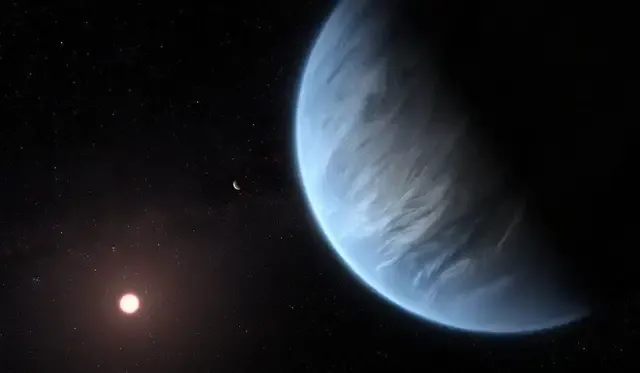
Legend: This illustration shows a super-Earth world, orbiting a star that is redder and darker than our own. If neighbor c is real and has the properties we currently infer, it will be the smallest and closest our exoplanet that is directly imaged.
But that doesn't mean that no planets orbit it; it just means that we need to use different technologies to find them. In 2016, scientists announced the discovery of Proximity b, a 1.3-mass planet, which orbits Proximity every 11 days. After four years of data, a new team announced the second planet, neighboring c, which weighs about 6 Earth masses and takes about 5 years to complete an orbit. This is the first super-earth found near us and may become the first super-earth to be imaged directly.
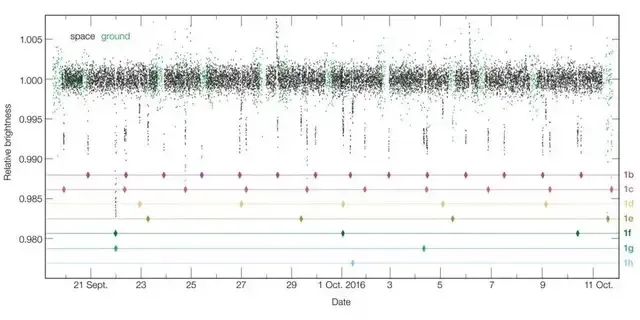
Legend: This graph shows the change in brightness of the supercold dwarf TRAPPIST-1 over 20 days in September and October 2016, as measured by NASA's Spitzer Space Telescope and many other telescopes on the ground. In many cases, the brightness of a star drops for a short period of time and then returns to normal. These events, called transits, are caused by one or more stars passing in front of the star and blocking some of its light.
Every star in the universe as we know it has properties that are roughly constant in time. The brightness of all stars varies, but the changes are small; the average brightness of most stars is uniform. However, when a planet or other object passes in front of the star relative to our line of sight, the planet temporarily blocks a small part of the star's light, causing the star to dim in a regular, regular manner, by a certain amount.
Unfortunately, most planets are not accidentally aligned as we see it, and planets next to each other are no exception. We have not observed the transit of planets to neighboring stars. But while this is our most successful method of discovering planets around other stars, such as NASA's Kepler and TESS missions, there is another, more general method that might find and characterize exoplanets , Whether they transit or not: stellar wobble.
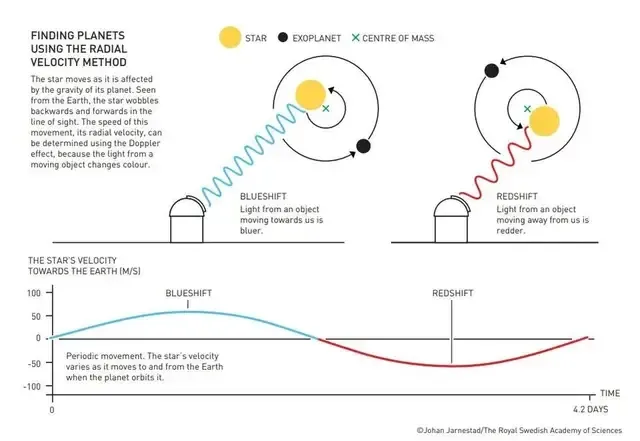
Legend: When a planet orbits its parent star, both the star and the planet will orbit around their common center of mass. Along our line of sight, the star will move in a oscillating manner: towards us (and adjusting its light blue shift), then it moves away from us (and sees the corresponding red shift). In 1995, this method allowed us to obtain the first exoplanet orbiting a solar-like star.
As each planet orbits its parent star, the gravitational pull of the star pulls the planet into an elliptical orbit, exerting gravity, causing the planet's motion to change over time. But for every action, there is an equal and opposite reaction, so the planet will also pull the star, causing it to change its motion response. As the planets orbit their parent star, the motion of the stars oscillates, and the movement along our line of sight (that is, the radial velocity of the stars) changes due to the mass and orbital period of each planet.
You can't directly observe the motion of a star, but you can infer it by observing its spectral lines over time. Each star contains spectral lines, which correspond to the elements in the outermost layer of the star: the frequency of the absorption line is the frequency at which the element is excited by the light of the star, and the emission line is the loss of excitation of the electrons in the atom, causing its own light emission. As the motion of the stars changes, a significant amount of red and blue shifts in the spectral lines can be detected.
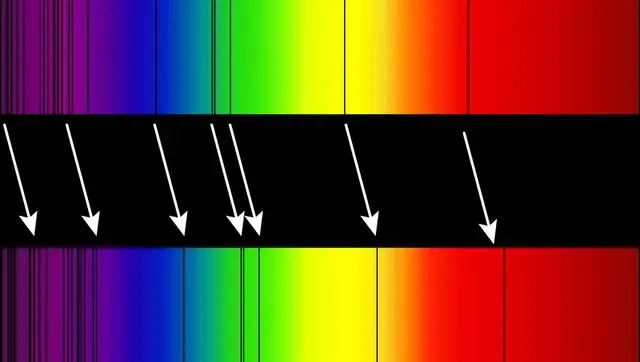
Legend: Each element in the universe has its own unique set of atomic transitions, which is allowed and corresponds to a specific set of spectral lines. We can observe these lines in the star's spectrum and how these lines change over time, which can give us an indication of the induced radial velocity caused by orbiting planets.
Because we can only measure the magnitude of the spectral line displacement, we must use it to infer the mass and period of the planet without knowing how the orbit is tilted relative to the line of sight. We can get good data for this period, but we can only deduce the minimum mass (a lower limit) of this planet; we cannot determine whether it is larger or more severe than our sight.
In 2016, the spectral line data of the neighboring star extended at that point for more than ten years, enough for scientists to extract a small exoplanet signal, corresponding to a planet of 1.3 Earth mass, with a period of only 11 days: neighboring b. Proximity c was initially announced in April 2019, but now there is enough evidence to be published in major journals. At 5.8 Earth mass, Proximity c is larger in scale, but its orbital period is 5.2 years. Data from two independent ESO telescope instruments-the High-Precision Radial Velocity Planetary Searcher (HARPS) and the Ultraviolet-Visible Spectrophotometer (UVES)-have now been merged, and all signs point to the existence of a second super-Earth size Planet.
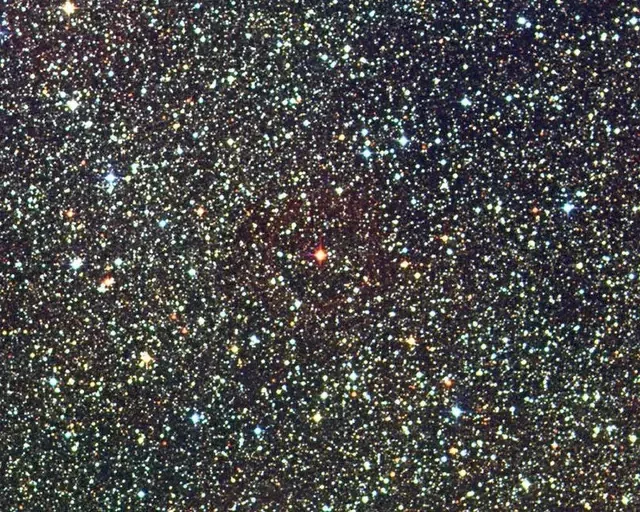
Legend: A part of the digital sky survey, the nearest star to our sun, is shown in red in the center. This is the closest star to Earth, only 4.2 light-years away.
Proxima itself is an interesting star, which is different from our sun. By solar system standards, it is very small, dim, and faint, with only:
15% of the solar radius
12% of the mass of the sun,
0.17% of total solar luminosity,
0.005% of solar visual brightness (most of the light is infrared),
They are all typical examples of small mass stars. Proximity stars also show very large and frequent stellar flares. They are the smallest members of the Samsung system and also include proximity b and c. Oversized or too far planets have been ruled out by various measurement methods, and they do not agree with our understanding of gravity.
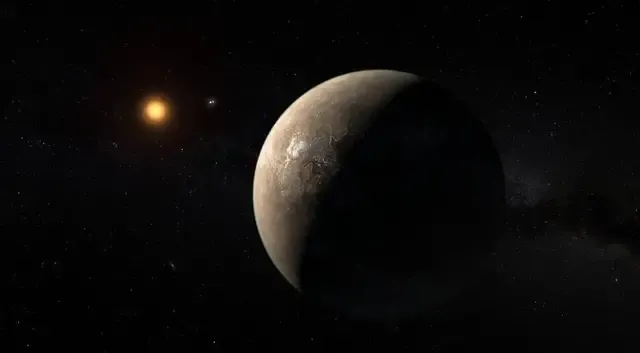
Legend: The exoplanet is adjacent to b, as shown in the illustration, and is considered unsuitable for life due to its star's atmospheric stripping behavior. This should be an "eyeball" world where one side is always grilled by the sun and the other side is always frozen.
When neighbor b was discovered, it triggered a storm of speculation that it was a rocky surface star and located in a habitable zone with a temperature similar to our own planet Earth. Immediately, people began to guess the existence of liquid water on the surface, a possible terrestrial atmosphere, and even thought that there might be life on this planet.
Unfortunately, these speculations must be too optimistic. Proximity b is only 7.5 million kilometers away from Proximity Stars-only 5% of the Earth's Sun distance-any thin, Earth-like atmosphere has been stripped away near Proximity Flares. Without the atmosphere, there would be no liquid water, and tidal forces would lock one face of neighboring b to its parent star. The side of the day is always baked, but the side of the night is frozen forever. It can be seen that neighbor b is completely unfit for living.
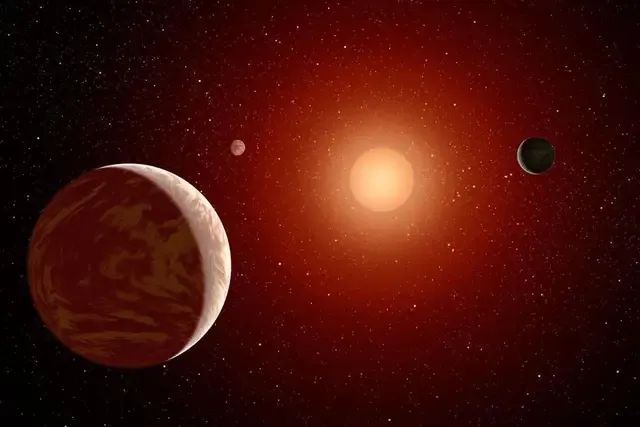
Legend: All inner planets in the red dwarf system will be locked by the tide, with one side always facing the star and the other side always facing outward, but there is a potential ground-like habitability ring between day and night (assuming atmospheric conditions are appropriate ). Neighbor b is too close to the star and has no atmosphere, but neighbour c has greater distance and mass, which can actually guarantee a very thick atmosphere.
Because it does not cross its parent star, but its orbit is so close to it, our prospects for imaging neighbouring b in the foreseeable future are also very dim. However, if the planet is larger and farther than its parent star, the next generation of telescopes—equipped with coronagraphs and even star covers—is likely to block light from neighboring stars and take images of the exoplanet itself.
So far, we have only directly imaged planets with masses of at least hundreds of times that of Earth. These planets rotate far beyond the orbit of Mars in the solar system: the largest and most separated planet. This is a spectacular achievement, and we have been able to image the planet directly, but improving our current limits will require far more technology than is available today.
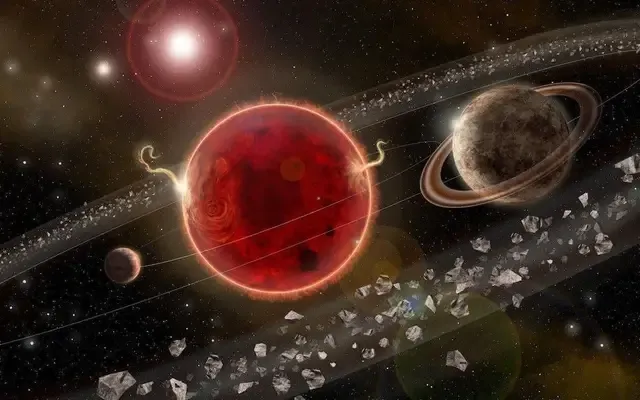
Legend: In this illustration of the Proximal system, the orbit called Proximal B is small. The planet's atmosphere is thin, locked by the tide, and the surface is rocky. The atmospheric thickness of Proximity c is composed of cold hydrogen and helium.
However, this is exactly what future observatories such as the James Webb Space Telescope and future 30-meter telescopes such as GMTO and ELT promise to provide: the ability to observe super-earths, which in space have enough of their parent stars distance.
If Proximity c proves to be true, then its maximum separation will be about 1 arc second (1/3600 degrees) near its nearest neighbor, which is directly found within the capabilities of these next-generation observatories. The planet's orbital properties require only 1.5 astronomical units (approximately 220 million kilometers), far away from neighboring stars, and much closer than any previously directly imaged planet.
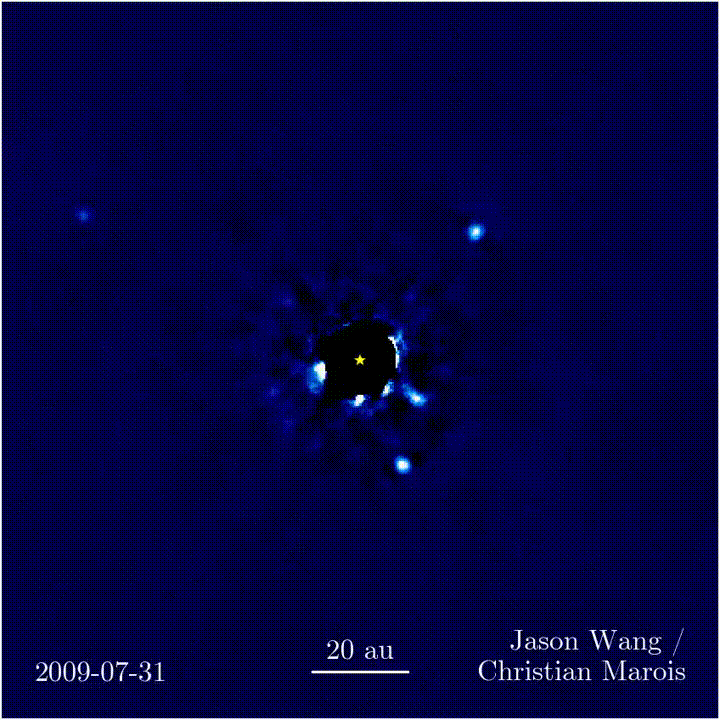
Legend: Four exoplanets are known to orbit HR 8799 stars, all of which have a greater mass than Jupiter. These planets were all detected by direct imaging within seven years.
It also has a guarantee that its minimum mass is 5.8 Earths, similar to Mars, and 1.5 astronomical units away from neighboring stars. It is a cold, puffy world, similar to a small version of Neptune. Although the general term for such a world is "super-Earth", we can be sure that it will not be a spherical planet at all. It has a huge hydrogen and helium cladding around it, which occupies most of the planet Mass and volume.
Assuming that the effort to directly image neighboring c eventually succeeds, this exoplanet will immediately become the smallest planet ever seen in orbit and the closest to its star. This is the first time that we can see an image of an exoplanet, which is almost the size of the Earth, which has never been achieved before. Although future data from the Gaia mission can confirm the planet and determine its mass, the ground and space-based observatories that came online later in the decade offer the potential to actually photograph the planet.
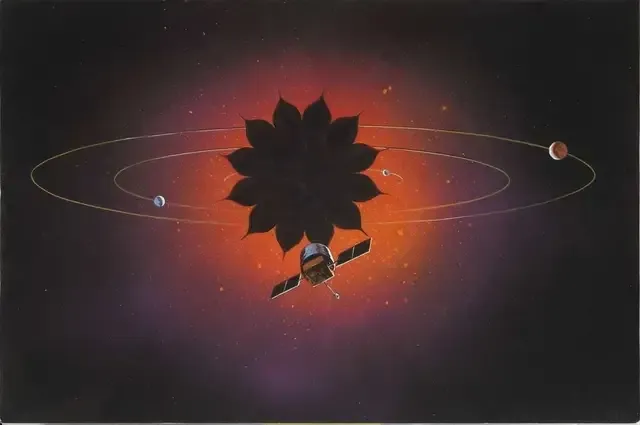
Over the 1920s, Star Shadow Concepts can achieve direct line-free planet imaging, while the Rioli on ELT and GMTO will enable us to reach there. This concept diagram shows a telescope that uses Stars, which allows us to immerse planets running around stars while blocking the light of stars, making it more than 10 billion. Just a few years ago, no one knows if the nearest star has a planet, or whether it will prevent us from observing them for some reason. Since we have established a larger better data kit, probing by advanced instruments and observations in our nearest star than neighboring stars, there are two planets. The first is the same as the neighbor B, like the earth like the earth, but it is not like a Mercury, it is unlikely to leak secrets in the short term. However, the distance between Mars and approximately six times the quality of the Earth may become a small planet that can be directly imaging and very close to the star.